We’re excited to introduce you to the always interesting and insightful John Luebtow. We hope you’ll enjoy our conversation with John below.
John, looking forward to hearing all of your stories today. Are you able to earn a full-time living from your creative work? If so, can you walk us through your journey and how you made it happen?
Also taught for 42 years ,and lectured , did workshops around the world.
the journey was long and arduous . form a ghetto , to where I am now 80 years later.
there is no speeding up the process! … unless you have family and friends in high places to get you there when you don’t deserve it. Today that is very common. Those who control the wealth control the art world as well as the business world. Starting with no money , a college degree on an athletic scholarship, working full time jobs to make ends meet … actually all of my life … always sleeping 4-6 hours a night and loving the work choices I had to do to get here now . , The following is a statement about the author by Emily Zaiden
Director and Curator of the Craft in America Center
The Mighty Force That Is John Luebtow
Meeting the prolific and versatile artist John Luebtow is in and of itself a memorable experience. He is a person who draws you in and you do not forget. It’s no wonder he makes artwork that encircles, lures, invites examination from multiple angles, and compels you to take note. His booming laughter and overflowing personality fills any room. There is no doubt his infectious enthusiasm and unflagging energy made him a powerful teacher, one who shaped countless young students of art over forty years.
John is a larger than life person. Rather uncoincidentally, he is known for making larger-than-life commissions and towering forms of wonder. Through his pieces, he facilitates the connection between people and place. His artworks breathe spirit, soul, and beauty into architecture. His sensitive and astute observations of life also speak loudly and clearly as intimately sized work.
John’s work embodies his inherent curiosity for exploring materials and techniques, tools and ideas. Early on, he deftly moved from fluidity in ceramics into glass. With roots in drawing, he speaks the language of the line. He is an explorer who consistently seeks out new artistic approaches. He is an engineer who designs and builds the necessary equipment for creating his visionary forms. and he is a poet, articulating his take on corruption, mortality, love, oppression, and democracy through sculpted surfaces of glass and metal.
PREFACE- Brief Background of Foundations Memories
What’s most important for me is for the reader to understand from the start that this book is not about my whole life. It is only about my life pursuing a calling from within, one that I was not consciously aware of until around 1964. Everyone has a life full of stories and personal histories. Within this book most of these will be set aside for the sake of brevity and focus, but also respecting the privacy of others I met along the way. There are many small details that would make this more of a literarily interesting book. That is not my goal. I wish to share the development and evolution of ideas, to share my path of discovery that led me here. We all know that a few words or a simple statement can open up an endless world of tangential thoughts that guide our focus to other places. I do not desire to do this here. I am sure that there will be many unanswered questions, that are not to be addressed here.
To understand my decision-making process as I was growing up, from 1944 on, I invite the reader to create their own familiarity with the scarring world events that were occurring daily, a few of which were… alcoholism, the effects of poverty, racism, the Equal Rights Amendment, the familial struggles, the lingering effect of the depression and war on our families, the ending of World War II, the Korean Conflict, Vietnam, the McCarthy Hearings, the threat of Nuclear War with Russia, Polio, the Cuban/Russian missile crisis, the assassinations of John and Robert Kennedy and Dr. Martin Luther King and many more. History is there to examine and reveal. The events of our times, then and now, affect everything we do and were/are allowed to do. We are what we have experienced and what we remember.
During my growing up years, 1944-1962, art was not a career. We knew that our immediate destinies were the trades, manual labor, or the factories. For most advanced academia, college, was not there. But if we were not willing to accept the normal, we did have other options. We were told that our country needed young new minds to re-build our nation. The choices at the fork in the road, such as engineering, law, medicine, business, architecture, etc. were ours to select. We could take control or accept the hand we were dealt. We were made aware that the world was at our feet. We were at least counseled that those higher goals were there if we made the choice to strive for them. At least for me, I had access to college through my athletic abilities and that was all, as an 18-year-old, I really cared about, to continue my sports career. At least I got out. This is that story. This story is about the changes and the events that enabled me to discover, cultivate and grow my life in the world of Art.
Some of the content in the book has been shortened to a few sentences to fit my original intent for it to be about my work and not an in-depth autobiography. My editor Kathy Neumeyer pointed this out. Thus, the following is a brief attempt to further clarify and explain those vacancies without having them in the text itself.
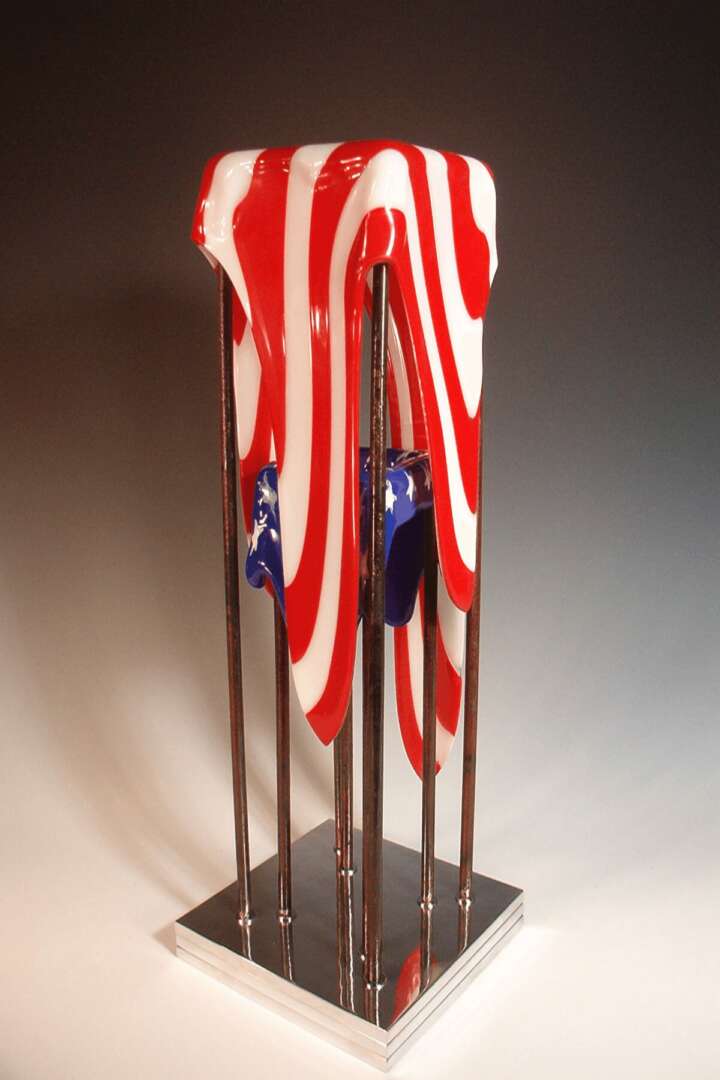
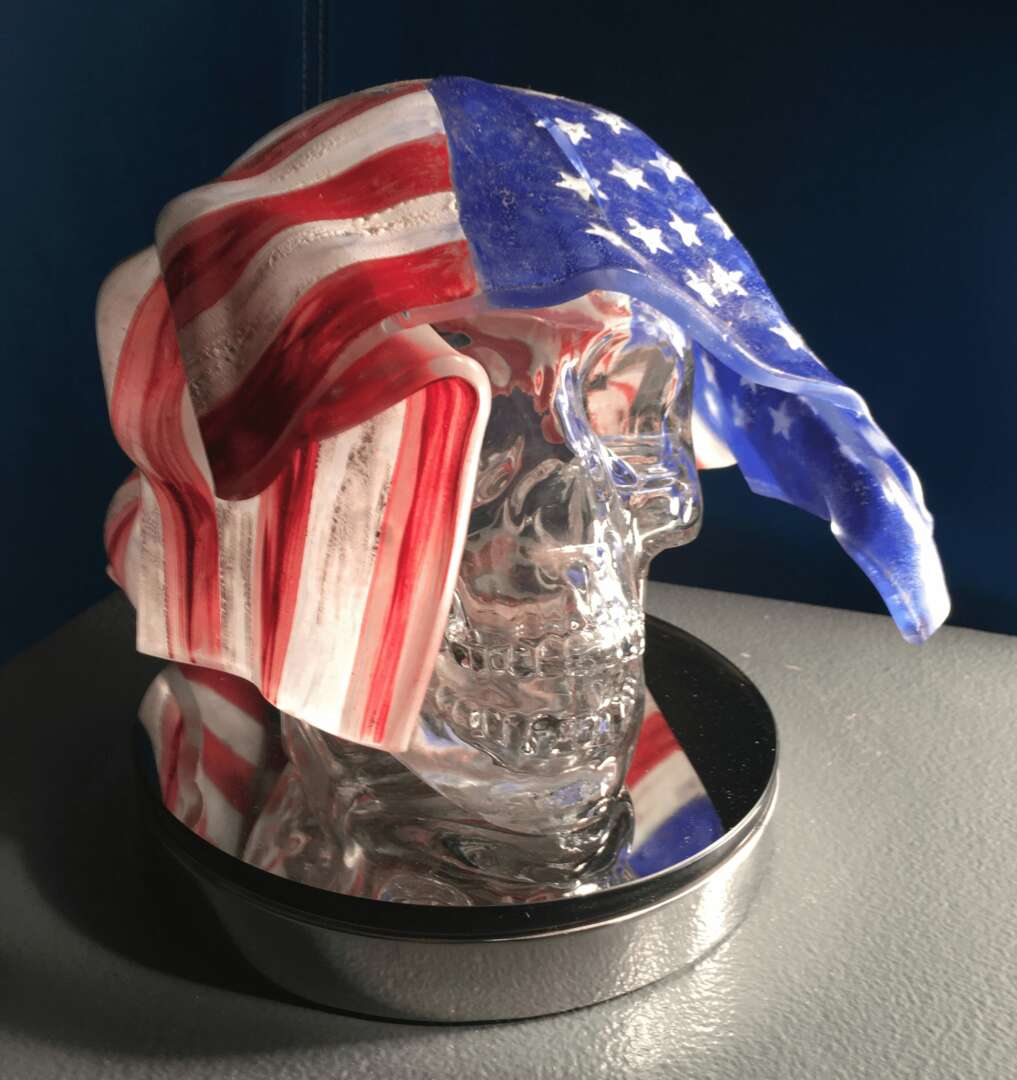
Great, appreciate you sharing that with us. Before we ask you to share more of your insights, can you take a moment to introduce yourself and how you got to where you are today to our readers.
PREFACE- Brief Background of Foundations Memories
What’s most important for me is for the reader to understand from the start that this book is not about my whole life. It is only about my life pursuing a calling from within, one that I was not consciously aware of until around 1964. Everyone has a life full of stories and personal histories. Within this book most of these will be set aside for the sake of brevity and focus, but also respecting the privacy of others I met along the way. There are many small details that would make this more of a literarily interesting book. That is not my goal. I wish to share the development and evolution of ideas, to share my path of discovery that led me here. We all know that a few words or a simple statement can open up an endless world of tangential thoughts that guide our focus to other places. I do not desire to do this here. I am sure that there will be many unanswered questions, that are not to be addressed here.
To understand my decision-making process as I was growing up, from 1944 on, I invite the reader to create their own familiarity with the scarring world events that were occurring daily, a few of which were… alcoholism, the effects of poverty, racism, the Equal Rights Amendment, the familial struggles, the lingering effect of the depression and war on our families, the ending of World War II, the Korean Conflict, Vietnam, the McCarthy Hearings, the threat of Nuclear War with Russia, Polio, the Cuban/Russian missile crisis, the assassinations of John and Robert Kennedy and Dr. Martin Luther King and many more. History is there to examine and reveal. The events of our times, then and now, affect everything we do and were/are allowed to do. We are what we have experienced and what we remember.
During my growing up years, 1944-1962, art was not a career. We knew that our immediate destinies were the trades, manual labor, or the factories. For most advanced academia, college, was not there. But if we were not willing to accept the normal, we did have other options. We were told that our country needed young new minds to re-build our nation. The choices at the fork in the road, such as engineering, law, medicine, business, architecture, etc. were ours to select. We could take control or accept the hand we were dealt. We were made aware that the world was at our feet. We were at least counseled that those higher goals were there if we made the choice to strive for them. At least for me, I had access to college through my athletic abilities and that was all, as an 18-year-old, I really cared about, to continue my sports career. At least I got out. This is that story. This story is about the changes and the events that enabled me to discover, cultivate and grow my life in the world of Art.
Some of the content in the book has been shortened to a few sentences to fit my original intent for it to be about my work and not an in-depth autobiography. My editor Kathy Neumeyer pointed this out. Thus, the following is a brief attempt to further clarify and explain those vacancies without having them in the text itself.
Early Family
Our familial financial perspective was always week to week. Gibbie (dad’s nickname) had a good dependable lifetime job as an electrician for Milwaukee’s Fire and Police Alarm system. Money was consistent, but always seemed tight, but as I learned as a teenager Gibbie always had money and time for his daily tavern ventures with his barstool profits, procrastinators, and alcohol liquidators. That part of growing up supplied me with true fodder for a “cheers” type of sitcom or maybe a comic book series. Any potential for investing or saving money was non-existent, but Dad did buy war bonds which he continued to acquire through the U.S. Savings Bond program.
This began around 1940, one with every paycheck and surprisingly continued for some time after the war. Mom’s income of 75 cents an hour was vital. Her unique job skills of a cleaning woman, maid, cook, caretaker, babysitter, and basically an anything goes worker for wealthy families in Whitefish Bay, Sherwood, Lake Shore Drive, etc. were appreciated. They learned to love her efficiency, work ethic, gentleness, and honesty. The children she cared for really bonded with her and loved her.
Any money I earned was mine to spend as I desired. My sources were multiple. One method was recycling. I had a small rusty red wagon, it sounds cliché, but true. The wheels were held on with bobby pins, we had no cotter pins, but it was mine and I cherished it. I would gather anything, newspapers, cardboard, metals, soda, and beer bottles from the neighborhood trash, pile them into my wagon and go about six blocks to the little recycling company off Keefe Avenue on Richards Street. Anything we could recycle we took to the old man, and he would pay us in cash. We all quickly learned what recyclables brought the most value.
Between the ages of 12-18 years, I worked for mom’s wealthy employers, for a supermarket, a landscaper and anything else that came along. For some of the summer months I worked on my grandparents’ farm. This served two functions, first it prevented my access to delinquency and second because polio was spreading in the city during the warm summers. Polio was truly a fear-inspiring epidemic. My schoolmate Pauly Ackerman, two houses down, got it. The first Salk vaccines were not available until around 1955-56 and then not everywhere. The delinquency threat rang as true as Polio. My twelve-year-old cousin was arrested being the lookout for a local neighborhood gang of older boys. They committed the Federal crime of breaking into beer trains parked on the tracks a few blocks from our house, thus time with my grandparents was perfect! I was out of the city on the farm where trouble and my health were under control.
The Farm
The small farming community that Gus and Emma lived in was in Marquette County. The Township was Harris, and the town was Harrisville, named in 1851 after James Harris, the first Postmaster. The population was unincorporated but there were around a hundred families. This is where my grandpa Gus built his last home. He had to some extent retired from the farm life and made a deal with one of his sons, Arnold, to run it for him and it would eventually be his. The people here lived with a concern for the community’s welfare and the existence of others. Here I learned about life, and what it took to exist. I couldn’t get into any real mischief because there was none and anyway everyone knew what everyone did. The local gossip line was instant. One example for me demonstrates this perfectly. I was 12 years old, hunting squirrels, walking along the county unpaved farm road between Harrisville and the farm, caring a loaded .22 cal. Rifle. Grandpa encouraged this. He told me why walk those five miles missing out on a chance to bag food. Well, guess who drove up while I was enjoying the sounds of nature? It was the local game warden. He quickly informed me that what I was doing was illegal because of my age, no license, walking on the road with a loaded gun, etc. He put me in the back seat and drove four miles to my Grandparents’ Harrisville home. I was petrified! At 12 I saw PRISON.
My imagination was always vivid. He drove through town, me in the back seat of the warden’s car. Members of the local gossip party line crew were sitting on their front porches. Well, that local conglomerate got on their gossip party-line “internet” system, rang up (phoned) Grandma, and when I arrived, she was waiting for me. Lessons learned and thanks to Gus one future lesson was how to avoid the warden. As long as my grandfather was alive, I worshipped him. He was my hero, thusly I always listened to Gus first. He entrusted to me with his blessing that this event was okay in his eyes and that we all know the warden. He made it into a badge of honor. He freed my soul from eternal damnation and from what I feared (as a 12-year-old with a vivid imagination)a prison term or at least Juvenile Detention Camp.
My summertime was spent hunting, fishing, hoeing, picking, threshing, and doing farm chores, helping wherever needed, and working on their farm and on the farms around Harrisville. I earned a token wage. In the evenings I would walk to town, about one-quarter mile, to Ed Frank’s small pickle shipping facility. All the local growers would bring their pickers and their daily labors to be processed. These migrant laborers were called Texicans, Mexicans from Texas. They did all the seasonal work and when they were no longer needed, or their visas were up, they were sent back. My job at this facility was to help unload and set up their gunny sacks of pickles and the boxes for the size sorting machines. Pickles were sold by size. The smaller the more value. When the sorting for each picker was finished, we would weigh the boxes, pay them by the pound, and then load the trucks to be sent to the factories in Berlin, Wisconsin. I relished the time spent here and what it taught me about the human race. The lessons of life learned with these soul-rich people and this community were priceless. My time on the farm and in the country with my grandparents introduced me to where and what my soul was. These years gave me a work ethic, taught me discipline, coping with pain, an unending drive, a never give up code, and that all things are possible with respect and tolerance and lastly as the title of Shimon Perez’s documentary says, “Never Stop Dreaming”. Educational Background- Elementary, Secondary, College
A brief touch on my elementary education. My first week in kindergarten was at Green Bay Avenue School in Milwaukee, Wisconsin. At five years of age, I had already acquired some incompatibilities with school and especially my teacher , so I decided that I didn’t like that school and I didn’t need to be there. I left at recess and walked a couple of miles home. I refused to go back.
Victor L. Berger Elementary School from my 8t h grade graduation book.1958. Below as it is now.
That didn’t go well with my father … but my loving mother always looking out for my welfare got me into another school, Victor L. Berger on 3rd street, which I attended through the eighth grade. Here is where I began to sprout, intellectually, academically, artistically, and athletically. The curriculum was wonderful as were most of the extremely dedicated faculty. I experienced strong Froebel pedagogically based art lessons, the three R’s, shop classes, athletics, and even home economics. This environment gave me my foundation for growth. Two world events that greatly affected us at the time were the aforementioned Polio and the threat of Russia and the Nuclear War. To prepare us for the potential nuclear dome, we did all school air raid drills and monthly civil defense exercises where the city sirens, mounted on top of every fire station, were sounded and school children were marched from their classrooms into underground bomb shelters. These greatly influenced everything we did and how we thought.
I have always been kind of overactive. Today kids like me have been labeled ADHD and many young minds have been ruined with drugs (Ritalin, etc.) to calm them down and destroy their creativity. Consequences relating to my hyperactivity (some say it is a problem, I say it is a gift) hit me like a bomb in the first grade. My teacher, Mrs. Hayes, was quite elderly and intolerant of anyone and anything disruptive. If you didn’t follow her rules, you were punished or in my case she said I was retarded, had me dropped from her class, and had me sent to the special needs class. At six years old, I was freaked out because the students in this class were EXTREMELY impaired. This meant mentally, physically, intellectually, emotionally, handicapped, in wheelchairs, drooling, moaning, etc. This was the room where they were all deposited, housed, and so called cared for. It was like “One Flew Over the Cuckoo’s Nest.” My mom and dad somehow straightened that out. I was assigned a new teacher.
I never forgot Mrs. Hayes or those few days as a 6-year-old 1st grader. The reader can logically assume that this experience taught me that it was best to acquire new methods of minimally controlling “me”. Other teachers somehow discovered that I had a natural artistic talent and directed me to art projects to benefit the school and their classes directly. My teachers wanted me to attend the Layton Art School in Milwaukee, but that was financially out of reach. At our school every class had an art time. Some days with lessons and assignments, sometimes with freedom to make whatever we wanted. Once for a sixth-grade art project I carved bars of Ivory soap into a bull buffalo, and a nursing calf and its mother. My teachers were blown away. Some of my teachers had me create maps of the continents and countries we studied, and some had me do illustrations. This was great for me, the other students and mostly for the teacher. They would set me up in the cloakroom, not being able to disrupt anyone, teacher, or student, lay out a roll of butcher paper, give me poster paints, brushes and let me create, resulting in butcher paper maps for the geography and history lessons. The 8th grade class project for the year was a marionette/puppet show for the whole school to see before our graduation. It was based on Daniel Defoe’s novel, Robinson Crusoe. I helped to design and paint the background, which was on a rolling screen, re-condition the existing puppet stage and make the puppets themselves. My mom sewed my puppet costumes. I was in “pig” heaven and so was my teacher Mrs. Peck.
My secondary education was at Rufus King High School, 1958-1962, image below. During the 1950’s and 60’s post WWII, Korean War and Vietnam era, the educational concerns were NOT Art. Any career in the Arts was non-existent. Academia was directed at rebuilding a world power, emphasizing engineering, math, and the sciences. Our concerns were: Polio, Russia, Nuclear War, Air Raid Shelters, the Sputnik, Communism, etc. My focus was on staying alive, not being DRAFTED while pursuing FUN, athletics, some academics, girls, and minimal Art. The Selective Service (the Draft) and the war were haunting us daily. We knew that college would give us a 2S student deferment. We did not want to die or return maimed for the anti-communist cause. Life magazine and the news showed us what was happening. This was our reality.
Academically I maintained a B average which put me on the low end of Honor Roll. I wanted to go to college, so I was told that was important. My counselors directed me to college-level courses in math, science, and English. My senior year I was allowed to take two art courses in which my art teachers, John Piacentine and Edward Boerner, a famous Wisconsin watercolorist, saw what I could naturally do. They wanted me to focus on art in college, but at that time that was not in the cards for me. In my senior art assignment for them I designed and executed a 4’ x 16’ mural that I painted in the hallway of the school outside the art classrooms. My true desire and goal since childhood was to be a professional football player. I worshipped the Green Bay Packers. We all have dreams! I thought I was good enough, and that was all that mattered to me. I pursued this dream with vigor until a knee accident in my college senior year crushed it.
Athletically, at King I did excel focusing on football, wrestling, and track, the hurdles, the sprints, and the broad jump. During the four years I was there we won the city championships in ’58-’59-’60 and finished second in ’61 losing the last game for the title. Films from that season got me a partial scholarship to several small schools. In 1961, Street and Smiths (Stinson’s) national football magazine wrote up our Rufus King High School backfield, John Wagner-QB, Randy Cox-FB, John Luebtow-RB, Joe Beauchamp LB as “greased lightning” and predicted us to win, oh well? Joe and I got football scholarships. Joe went to Iowa State and then spent nine years in the Pros with the San Diego Chargers. In my college junior year at California Lutheran College I received a letter of interest from teams in the newly formed AFL. It charged my ego, but it was only a letter of interest. Many college athletes got them.
Upon graduation, to my astonishment, the faculty voted and honored me with “the George Wolf Outstanding Athlete, Scholar, and Leader of the Class of 1962”. With honesty and humility, especially after my 42 years in academia and giving awards, I haven’t figured this out. I would love to hear what was said and how they arrived at this decision.
College-My first college, from 1962-1964, was North Central College in Naperville, Illinois. I played varsity football and ran varsity track there. I received a scholarship and worked in the cafeteria as part of it. The classes I took focused on architecture. College was a GAS! Athletically I had two good years, but academically, too much partying caused problems plus the architecture professor retired and the program was shut down. In February of 1964 I wanted and needed to look other places. That problem was solved for me after I contacted my sister Mary Jane (seven years older than me). When she was 17 and I was 10 , she got married to Don Orlando, the leather jacket Italian Fonz of King High. This life-altering decision was partly triggered by the major incongruities in the relationship between father and daughter. They never got along. The marriage was her way out, plus a means of spiting our father. Another dagger was we were German Lutherans, and he was an Italian Catholic. This was a familial problem that can only be understood via a historical perspective. After completion of the ceremony. They left Milwaukee for California, settling in Thousand Oaks. She had three daughters right after that. Due to life’s coincidences, I was present for the birth of each. Our relationship grew as I aged.
Once in Thousand Oaks, they along with Donald’s brother Tommy, opened a restaurant called Orlando’s. It was a local success. This was the 1950’s-60’s and the beginning of the explosion of the Conejo Valley, Westlake Village, and Newberry Park real estate market. Mary and Don invited me to come out and reside with them. I would work for them, and I would have a place to dwell. I had spent the summer of 1963 with them, working at their restaurant, House of Orlando’s. As I discovered that year, the real bonus, which increased my reasoning for moving to California, was that in 1960 California Lutheran College was established in Thousand Oaks and CLC was also the pre-season training camp for the Dallas Cowboys. It was as some say, real Karma. They were in the early building stages developing everything, so by 1964 it was the perfect new home for me. I could resume my education and my athletic career dreams.
Before burning my Naperville bridge, I met with the CLC athletic director, John R. Siemens (Jack) the dean, Dr. Lyle Gangsei and the football coach, Bob Shoup, and was welcomed into the school with the understanding that I take a few academic courses to recover from my Naperville partying phase, but that was a piece of cake. They also encouraged me with financial aid. The seeds for change and growth had been planted.
My second college, in 1964, without hesitation, in the freezing winter weather of February I left Naperville, Illinois to arrive in the warm, sunny, beach, and bikini world of Southern California. Beach Boys here I come. I never looked back! Once again Athletics opened the door.
This next phase of my life was the beginning of EVERYTHING! Here is where my artistic and football directions were allowed to take root and explode. My artistic direction was due to the guidance from my first and most significant mentor, Professor of Art Jerry Slattum at California Lutheran College (later changed to California Lutheran University in 1986). He along with Professor John Solem and Professor Bernard’s Weber changed my direction and my life. They recognized my innate talents and gifts that I had denied. They instilled in me my new direction that art was my career and lifetime goal. They opened doors to the world of creating, the world of art. Through their guidance I was admitted to the UCLA graduate program in Art, 1967-1969, receiving a MA in Ceramics and then later a MFA in Glass in 1975. Professor Weber played a very special role. After WWII and the pain of losing everything to the Nazi’s he and his wife fled the Netherlands, their homeland for America ending up in Thousand Oaks. It was due to his life as an artist and the contacts he had built in Europe and the Netherlands that opened opportunities for those he recommended. I was invited as an artist to work in the Netherlands from 1969-1971.
Athletically, the football coaches Bob Shoup, Reverend James Kallas and Don Garrison inspired me to be my best. The football program at CLC rose to become a respected local and national powerhouse. My serious involvement and commitment to sports as a career ended in 1965 with a serious injury to my knee. The injury actually was a real blessing. It halted any further hope for a professional athletic career, but also gave me a 1F medical deferment from the Selective Service Draft. Now all my energy moved to the Arts. I was off to UCLA, to the Netherlands, to the World of Art! It allowed me to truly make lemonade from the lemons.
In 1966 I married a local Thousand Oaks girl. She birthed a son in 1968. The three of us moved to the Netherlands in 1969. By 1971 she wanted to leave, she hated living in Europe, so I resigned from my position at de Porceleyne Fles. We returned to Thousand Oaks, California. Upon that return in 1971 I immediately acquired a teaching position at Harvard School (changed to Harvard-Westlake School in 1989) in Studio City, California. By 1974 we were divorced, and I got custody of my son Matthew and raised him as best as I could as a single dad. I retired from teaching there 42 years later. Carl Wilson and I built the new Art Department from the ground up. I received many academic awards during that period two of which were… being honored as a Presidential Scholar in 2002 with the U.S. Presidential Scholars Teacher Recognition Award presented by President George Bush. I was one of five in California and 128 in the United States… and Harvard’s Great Teachers award. The first of these was given in 1932. Between that time and 2018, out of the many academicians, there were only 23 people honored, me being the 23rd. My tenure was from 1971-2013.

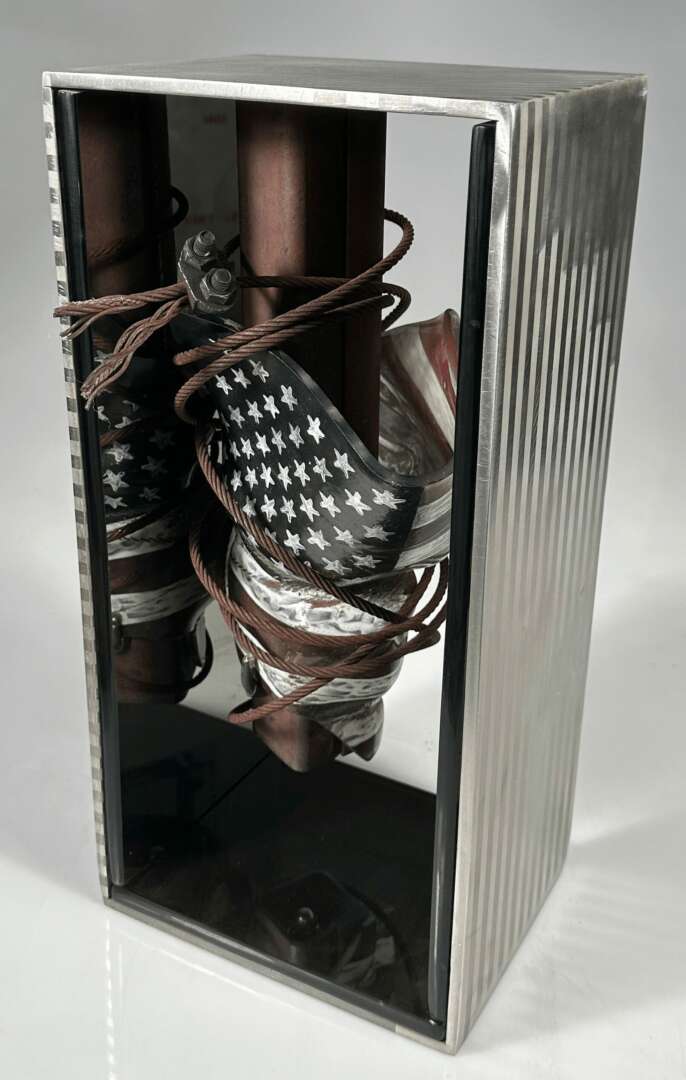
What do you think is the goal or mission that drives your creative journey?
Summary Introduction
Coming from an overt awareness of the realities of life’s struggles my early artistic pursuits were with “available” materials mostly pencil and Prang watercolors. Athletics afforded me a college education. An internal necessity to search for and express meaning gave me art. My interest in clay and a MA Degree in Ceramics from UCLA solidified a direction to pursue the large-scale architectural format. This transpired from 1969-71 during my tenure as Artist and Assistant to G.J. Geluk, Director (CEO) of “de Porceleyne Fles”, Delft, Netherlands. My work there was in the Architectural Ceramics Department. Their forte was the design, fabrication, and installation of large ceramic murals for site-specific projects worldwide. During this time frame my collaborative work with Leerdam Glass formed the catalyst which seduced me to move from clay to glass as my medium of choice. Once I experienced it, it consumed me.
No other material dealt/deals with light, line, movement, change, intensity…all things visual…as glass did/does, while also paralleling life, having an inner and outer self, an internal and external presence/being.
In 1971 after returning to the United States, getting the teaching position, a divorce, and custody of my son, I received an academic scholarship leading to another graduate degree, a MFA Degree, this time in glass from UCLA in 1975. I pursued glass from all perspectives; blowing, cutting, polishing, enameling, bending, casting, always looking for new ways to expand my ideas and their scale into the architectural venue. After considerable experimentation and technical exploration, I designed and built furnaces which gave me the ability to manipulate (kiln form) 8’x10’ sheets of 1” thick float glass. This technique enabled me to pursue my interest in line which originated from my study of the female nude solidifying three-dimensionally what I call Linear Form. Line that expresses the rhythm and movement of energy; line with, on, and in form; line whose extension becomes form. The edges of the kiln formed glass and the treatment of the surface with etching spoke perfectly to this issue. For me art communicates that which it possesses, and architecture offers the environment for such possessions to be experienced. I view art in architecture as a permanent commitment, as a cultural reference that we leave for generations. I feel that the integration of art into architecture must be birthed and nurtured with extreme sensitivity and caution in order to be successful. Art both influences and conditions the way the environment is perceived and received. One needs to be supportive of the other. The site and the art being equal, the sum of their parts create a greater whole.
I have always had an insatiable desire to understand and share the technical processes and media, whatever they are. I needed to know how to do it, to be able to do it myself. I learned the construction trades early and if I came across any Art techniques, I learned them and later they were incorporated into my work and my teaching.
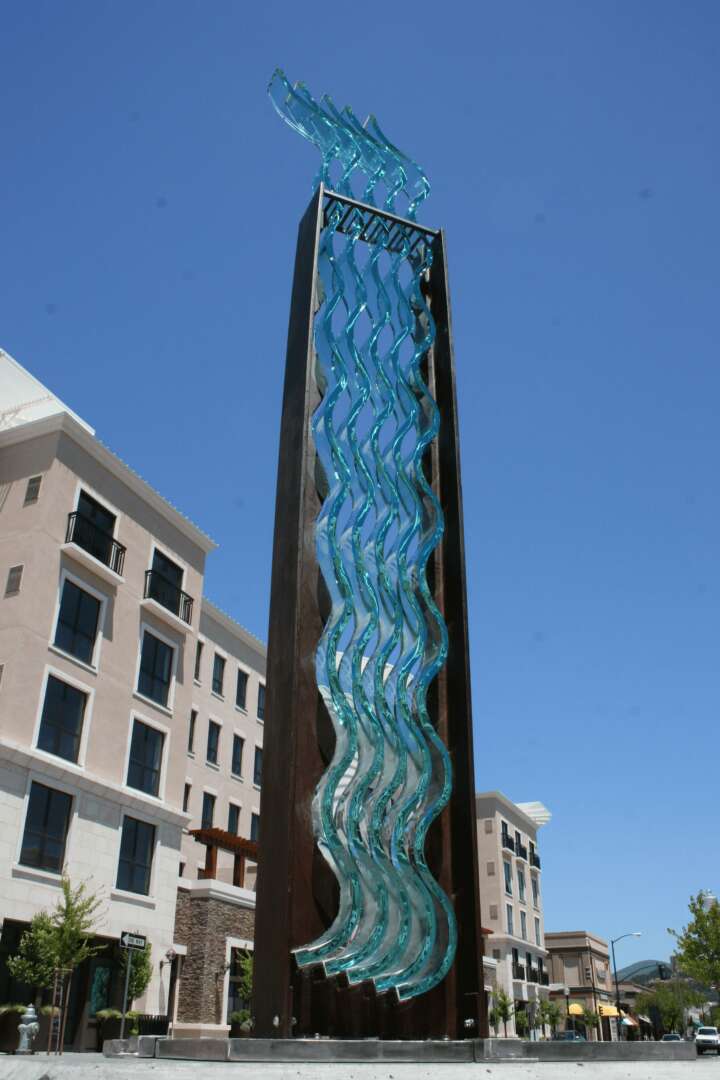
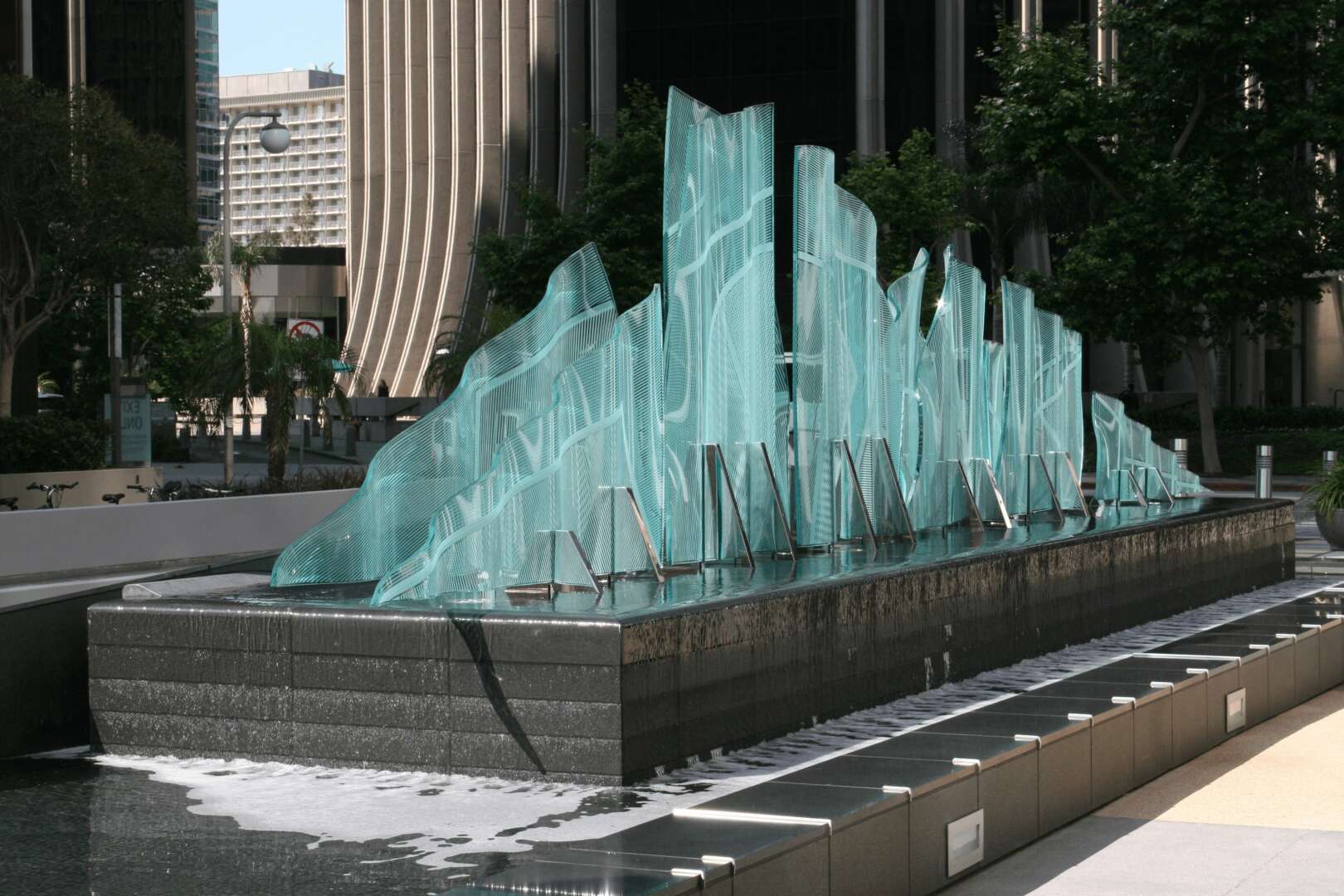
We’d love to hear your thoughts on NFTs. (Note: this is for education/entertainment purposes only, readers should not construe this as advice)
the series of questions you present … each is a book in itself …Thusly I took the shortest on for me …. hahahahah….
They are a BS scam …they are not ART… they make incompetent beings think they are competent .
an artist must understand the media … tactual, hands on process oriented …. At this
Contact Info:
- Website: https://www.luebtowj.com
- Instagram: John luebtow
- Facebook: John luebtow
- Linkedin: John luebtow
- Youtube: LUEBTOW OR JOHN LUEBTOW … MANY VIDEOS !!!!!!!!!!
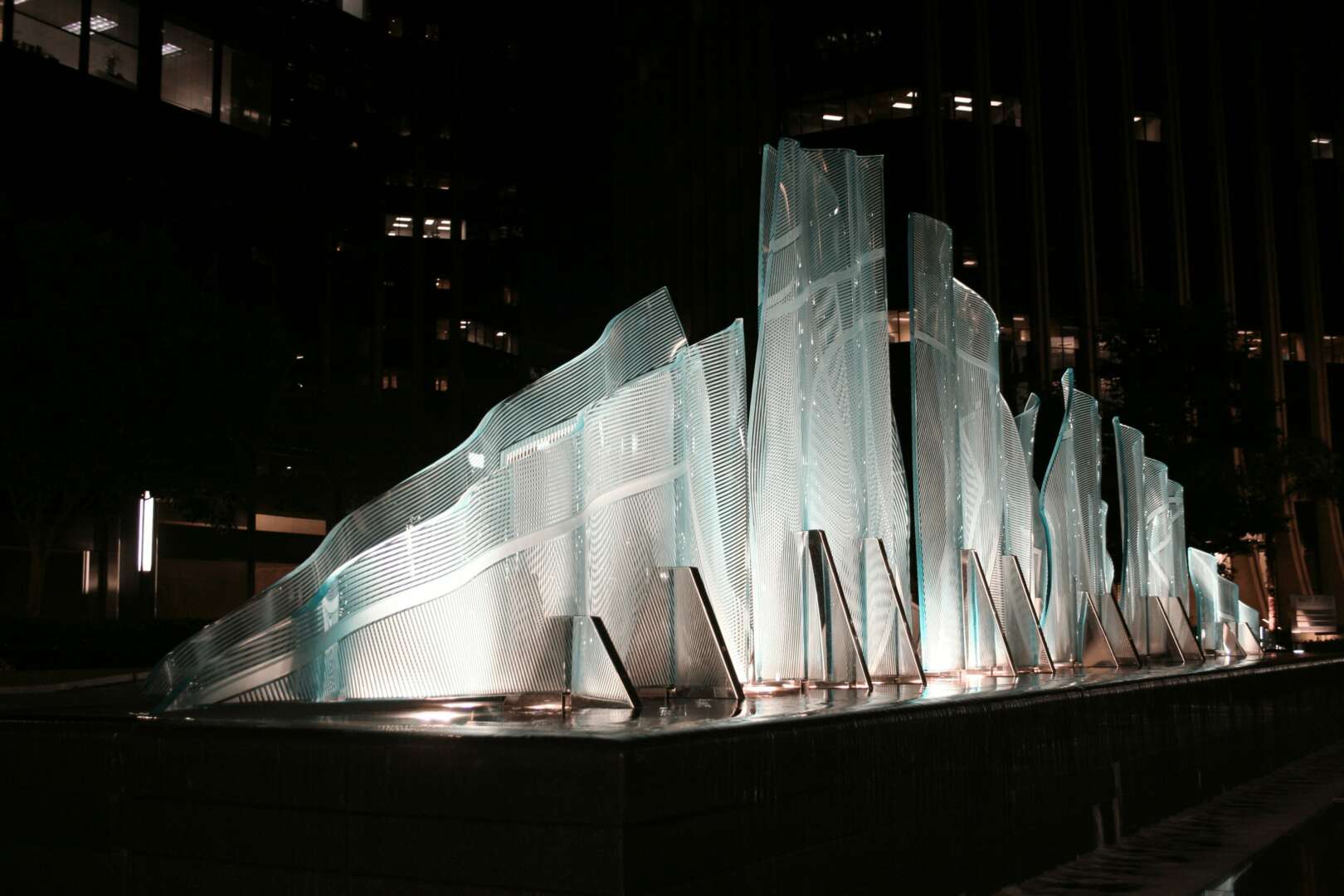

Image Credits
All images taken by the artist …ME…JOHN LUEBTOW


